Sandy Springs, GA Pollen and Allergy Report for Summer 2023
Pollen Allergy Trends in Sandy Springs, GA
When is pollen lowest in Sandy Springs, GA?

February
Lowest month total PPM
Avg. PPM
When is pollen highest in Sandy Springs, GA?

March
Highest month total PPM
Avg. PPM
How does pollen in Sandy Springs, GA compare to Georgia?
Sandy Springs has a lower average PPM than the state of Georgia.
Sandy Springs yearly avg PPM:
Georgia yearly avg PPM:
How does pollen in Sandy Springs, GA compare to the USA?
Sandy Springs has a higher average PPM than the USA.
Sandy Springs yearly avg PPM:
USA yearly avg PPM:
Is pollen worse this year in Sandy Springs, GA?
Spring 2023 was worse than spring 2022.
Spring 2023 PPM:
Spring 2022 PPM:
Average PPM in Sandy Springs, GA
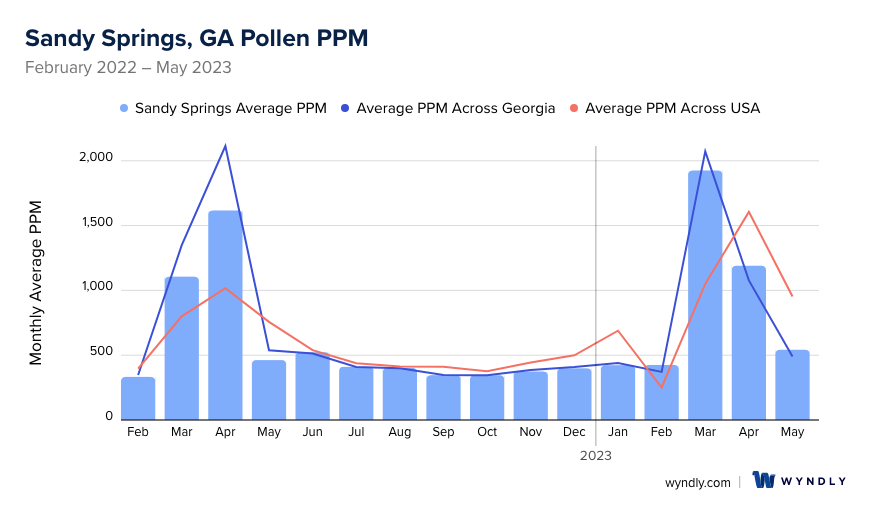

Sandy Springs, GA Pollen and Allergy Breakdown by Month
Grass
When is grass pollen highest in Sandy Springs, GA?
April has the highest grass pollen in Sandy Springs, GA with an average PPM of
When is grass pollen lowest in Sandy Springs, GA?
October has the lowest grass pollen in Sandy Springs, GA with an average PPM of
Tree
When is tree pollen highest in Sandy Springs, GA?
March has the highest tree pollen in Sandy Springs, GA with an average PPM of
When is tree pollen lowest in Sandy Springs, GA?
October has the lowest tree pollen in Sandy Springs, GA with an average PPM of
Weed
When is weed pollen highest in Sandy Springs, GA?
June has the highest weed pollen in Sandy Springs, GA with an average PPM of
When is weed pollen lowest in Sandy Springs, GA?
February has the lowest weed pollen in Sandy Springs, GA with an average PPM of
Sandy Springs, GA Pollen Monthly Breakdown by Pollen Type

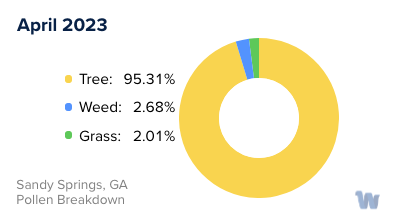
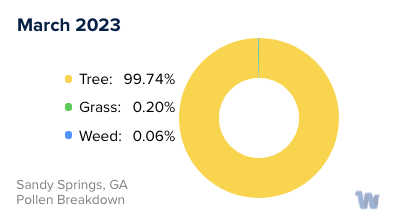

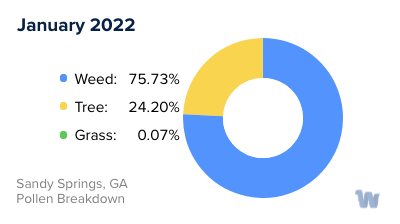
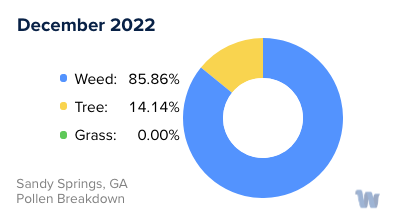
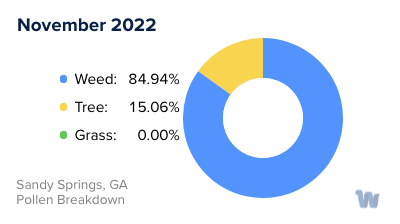
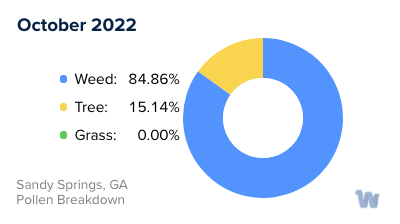
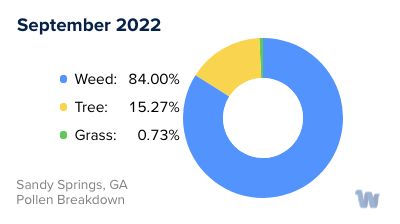
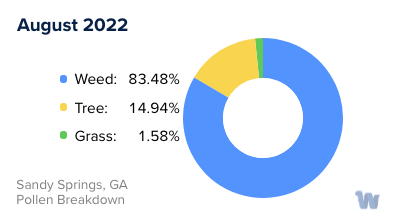
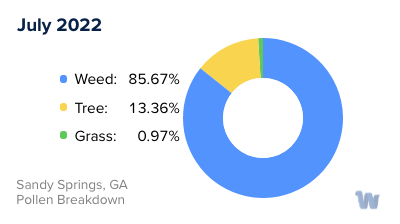
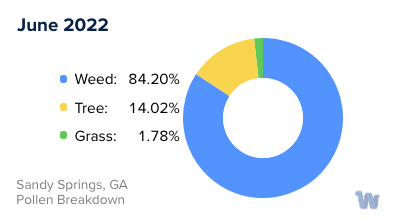
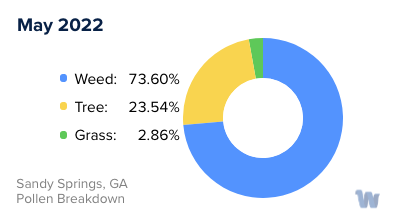

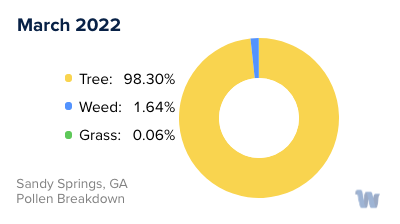

Pollen and Hay Fever in Sandy Springs, GA
Hay fever, scientifically known as allergic rhinitis, is a common condition that many residents of Sandy Springs, Georgia, experience. This is a reaction to allergens in the air, one of the most prevalent being pollen. When it comes to pollen allergies in Sandy Springs, it's important to understand the types of pollen that commonly trigger these allergies and the seasons in which they are most prevalent.
Pollen, the tiny, powdery grains needed to fertilize many kinds of plants, is a significant allergen. In Sandy Springs, the primary pollen producers that impact residents are trees, grasses, and weeds.
Tree pollen is typically the first to appear in the year, often in late winter or early spring. This is when many trees, such as oak, pine, and maple, release their pollen into the environment. The mild and somewhat moist climate in Sandy Springs tends to foster early blooming, so residents may start experiencing tree pollen allergies slightly earlier than in other regions.
Following the tree pollen season, grass pollen takes over. During late spring and early summer, grasses such as Bermuda grass, ryegrass, and Timothy grass begin to release their pollen. This period can be particularly challenging for allergy sufferers as these grasses are quite common in the region's landscapes.
Weeds, the last group of pollen producers, become active in late summer and fall. In Sandy Springs, the most common types of weed pollen come from plants such as ragweed, sagebrush, and pigweed.
It's worth noting that weather conditions can impact pollen levels. Rain can help to clear pollen from the air, leading to a temporary reduction in allergy symptoms. Conversely, dry and windy days can increase pollen distribution, worsening symptoms.
Understanding the types of pollen and the seasons in which they are most prevalent can help Sandy Springs residents better anticipate and manage their pollen allergies. By being aware of these patterns, individuals can take proactive steps to limit their exposure and mitigate the impact of these allergens on their daily lives.


